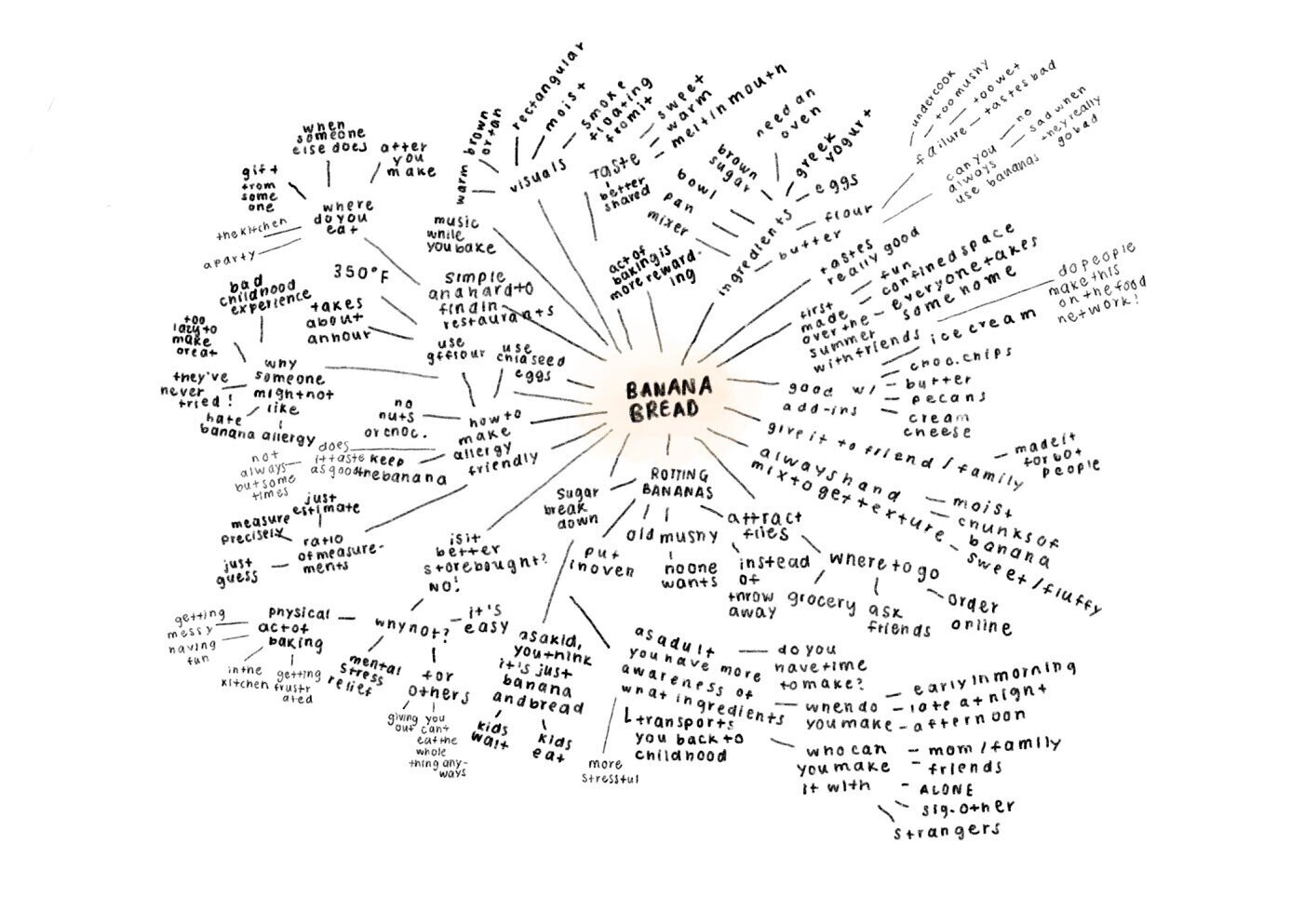Banana Bread Conceptual Model
fall 2019

role
designer
tools & skills
procreate | illustrator
For this project, we focus on two types of models. The first of which is a concept map, which is specifically for the designer. This visual diagram maps out all of the aspects, emotions, experiences with some concept. The bigger, more complex, and more messy, the better. Since this is solely for the designer, this is a great brainstorming method. Once the concept map is complete, we can dive further into a single aspect for our conceptual model.
The conceptual model is different than the concept map in that it is used by the designer to convince a target audience to do something. The idea from the conceptual model is taken from some part of the concept map and can appear in various different forms such as venn diagram, spider, matrix, process, maps, or a hybrid. The goal of the conceptual model is not to visualize some type of data, but rather to visually show relationships and an abstract representation of a system for the audience to understand and act upon. For my project, I chose to convince a grocery store, such as Trader Joe's, to sell rotting bananas and for the customers to see value in and purchase them.
Here is the final process book.

breaking it down
Our audience for this conceptual model is Trader Joe’s, a popular grocery store known for its unique and strong branding. Trader Joe’s already sells bananas, and customers do purchase them; however, once bananas begin to rot, they are taken off of the shelves and no longer sold. Rather than throwing away rotting bananas and contributing to food waste, Trader Joe’s can market rotting bananas as something to be celebrated rather than feared. Rotting bananas are not trash, but “banana bread ready”.
For the design of the conceptual model, we depict the natural life-cycle of a banana, shown by its distinctive color changes from green to yellow to brown. Rather than stopping at the browning stage, we naturally progress to “Banana Bread,” to incorporate banana bread as the natural next step. This can change the mental model we hold for bananas and reduce the anxiety and fear we have over either selling rotting bananas or purchasing bananas and having them rot in our homes if we don’t eat them in time.
Process
Concept Map
We began by first understanding all aspects of banana bread. This was done through a concept map using Procreate.

Conceptual Model Drafts
Next, I drafted several conceptual models on paper based on the concept map. The idea was to take individual segments and create communicative design to the audience.
Digitalizing & Finalizing
The last steps were to select and iterate upon a single conceptual model. Ideally, anyone can view the conceptual model and understand the message it is trying to convey.
I decided to focus on telling my message through the phases of a banana. I am fascinated that most rotting fruit we dislike and tend to throw away, yet banana bread depends on rotting bananas. I found value in having rotting bananas in grocery stores for both the company, and the consumer. Here is my final iteration.




